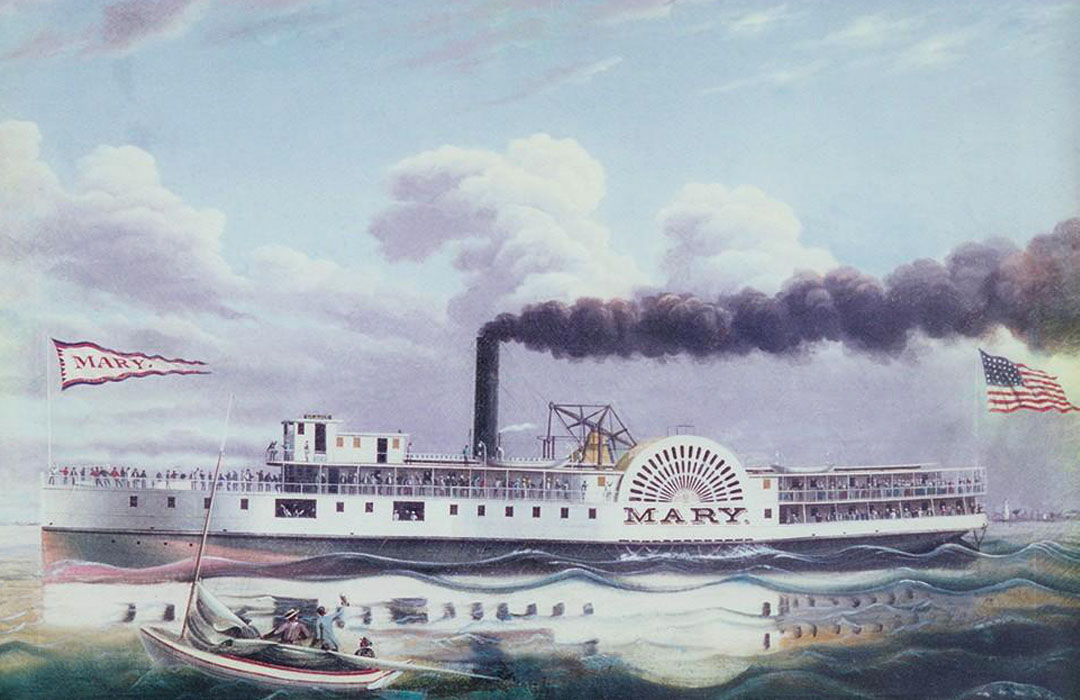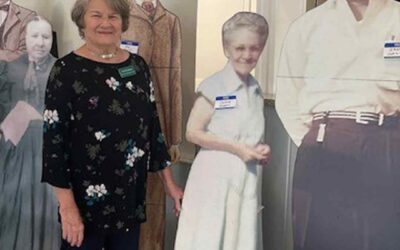
Image: The SS Mary sunk off the coast of St. Joseph’s Island and resulted in the Coast Guard Station in Port Aransas.
The Aransas Pass has allowed Port Aransans to benefit from the sea for a long time. Sport fishing, and its related businesses, began circa 1880 when mainlanders building the jetties discovered the pass was alive with tarpon. The jetties led to the rapid rise of maritime enterprises on close by Harbor Island.
There, townsfolk found work exporting cotton (1912-26), building ships (1918-1919), importing and exporting oil (1912-93), ferrying vehicles (1926) and fabricating offshore drilling equipment (1976-2003). Today on Harbor Island, the Eagle Ford Shale oil play has created jobs in oil shipment and the Martin Midstream docks provide work in offshore services.
The Mercer Logs
Before the recent archiving of the 1866-1877 Mercer Logs, little was known about the origins of Mustang Island’s maritime history. In fact, all the Mercer men were involved in commercial shipping. Patron Robert Mercer was the appointed County Wreck Master who oversaw the salvage of vessels wrecked at the Aransas Pass. Mercer’s sons John and Ned guided ships through the pass as bar pilots—bar is the water area at the mouth of a pass.
Commercial Vessels
Schooners and steamships were the chief commercial vessels mooring at the Mustang Island and St. Joseph Island wharves.
The 1872 logs report the vessels piloted by the Mercers were 46 schooners, six steamships, two sloops and two brigs. It is a steamship (SS) that is the second most significant vessel in island history (the Farley fishing boat is first).
SS Mary
SS Mary was entering the Aransas Pass — crossing the bar — in November 1876 when she struck a buoy and took on water. Despite high seas, bar pilots rowed to the stricken vessel and saved the ship’s company. Mary’s sinking was big news, and a reason that in 1878 the government commissioned a Life Saving Station — precursor of the Coast Guard — for Mustang Island. (John Mercer was the station’s first officer in charge.)
Lightered Vessels
Most commercial vessels coming through the Aransas Pass were bound for Corpus Christi where transportation systems moved their cargos to inland markets. Some Corpus Christi-bound vessels tied up at Mustang and St. Joe islands to be lightered. The route to Corpus Christi was the Morris and Cummings Cut, a shallow, narrow waterway entered through Corpus Christi Bayou.
The cargos of ships unable to navigate the cut were offloaded onto shallow draft scows called lighters, which carried the cargos to Corpus Christi.
Lightered Cargoes
The lightered cargoes mentioned in the Mercer Logs were lumber, shingles, bricks, coal, flour, sugar, coffee, liquor, oranges, peaches, pigs feet and hog heads. Those products arrived from the Texas ports of Beaumont, Bernard River, Brazos Santiago, Galveston, Indianola, Lamar, Orange, and Sabine; the U.S. ports of Brasher City (LA), Calcasieu (LA), Mobile (AL), New Orleans, New York, Pascagoula (MS), Pearl River (LA), Pensacola, Philadelphia; and the international ports of Hamburg, Havana, Liverpool and Tuxpan (MX).
The primary cargoes exported through the Aransas Pass in the early 1870s were sheep hair from Mustang Island (Thompson ranch) and live cattle and the cattle products of hides, bones, and tallow from the packeries in Rockport and Fulton. The destination ports were often New Orleans and New York.
Port Aransas Vessels Today
Today, Port Aransas is homeport to Coast Guard vessels, commercial and party fishing boats, excursion craft, pleasure sailboats and power yachts, bay fishing boats and offshore fishing boats called sport fishing boats.
First published in the Port Aransas South Jetty, October 3, 2013.
John Guthrie Ford

Ford authored several books about the history of Port Aransas, transcribed the Mercer Logs, was responsible for multiple exhibits at the Port Aransas Museum and was an interviewer for many of the oral histories for for the PAPHA archives.
Ford also wrote a history column for the Port Aransas South Jetty, called History Corner, and wrote historical articles for the Port Aransas Museum newsletter starting in 2007.
The Dr. John Guthrie Ford History Award is presented by PAPHA for historical scholarship.



